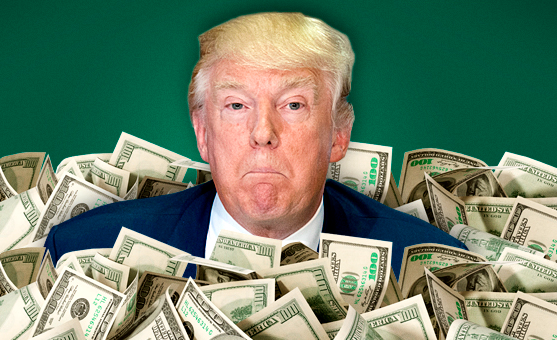
TRUMPS NEW PLAN IS SHOCKING AMERICA!
America jolted when Trump unveiled his new proposal — a thousand dollars for every newborn, funneled straight into an investment account tied to the stock market. It wasn’t pitched as charity or government aid. It was framed as a launchpad, a promise that every child would enter adulthood with a piece of the American Dream already growing in their name. Hopeful parents saw possibility. Skeptical parents saw a ticking time bomb. And the rest of the country is still trying to figure out whether this is bold policy, political theater, or a gamble with consequences we won’t fully understand for decades.
The idea hits hard because it taps into a truth everyone knows but rarely says outright: wealth in America begins long before adulthood. Some kids inherit investments, houses, trust funds. Others inherit nothing but debt and prayers. Trump’s pitch lands directly in that divide, pointing at it, poking at it, promising to level it — or at least pretend to. For families who’ve watched housing prices skyrocket, college tuition balloon, and basic stability turn into a luxury, the thought of a pre-funded nest egg quietly building in the background feels like a break in the generational cycle.
The vision is seductive. Imagine turning eighteen and not starting from zero. Imagine a cushion — money that could pay for a semester of college, a used car, a small business, or the first month’s rent on an apartment. It’s the kind of financial head start millions have dreamed of but never had access to. It’s a chance, even if a small one, for kids born into struggle to step into adulthood with something more than thin hopes and thicker bills.
But tied to the excitement is a quiet, growing dread. Because the plan doesn’t lock the money into savings. It locks it into Wall Street. The value each child inherits will rise or fall with the market’s whims. A child born in a year of economic growth could turn eighteen with a solid sum waiting. A child born at the edge of a recession could end up with barely more than the original deposit — or even less once fees and market dips eat into the value. It doesn’t matter that the idea sounds modern or innovative. It’s still a bet, and the stakes are children’s futures.
The country isn’t just being asked to accept the idea of government-funded investment. It’s being asked to trust the market as a reliable partner in shaping the economic stability of the next generation. For some, that’s perfectly acceptable. For others, it’s reckless — like handing a newborn a lottery ticket and calling it a safety net.
Supporters argue that tying the program to the market encourages long-term wealth-building rather than another layer of government dependency. They like that the proposal taps into the machinery of American capitalism instead of dodging it. They see it as a chance to give every child an equal shot at compounding returns — the magic formula that has helped the privileged grow richer while everyone else struggles just to stay afloat.
Opponents see the same logic but from a different angle. They ask why infants should be exposed to risk at all. Why government money — taxpayer money — should be turned into chips on the casino table of the stock market. They argue that the idea doesn’t eliminate inequality; it just reshapes it. Children born during market highs get lucky. Children born during market lows suffer. The system, they say, could end up reinforcing the very imbalance it claims to fix.
The proposal forces the country to examine uncomfortable questions. How much should the government intervene in private wealth? How much should the market determine public policy? And should a child’s future be tied to forces that even seasoned economists can’t predict with confidence?
Supporters point to the wealth gap, which has widened to such an extreme that simply giving families cash outright may not close it fast enough. They argue this plan could create a generation that enters adulthood with equity — something solid to build on. It’s an undeniably appealing vision in a country where most people don’t have even a few hundred dollars in emergency savings.
But critics warn that the very structure of the plan ensures uneven outcomes. Stocks grow over time, yes, but not evenly. Crashes happen. Booms happen. Some eighteen-year-olds may see tens of thousands of dollars in their accounts. Others may receive an amount that feels more symbolic than useful. A program marketed as the great equalizer could easily turn into another tool of economic roulette.
Parents everywhere feel that tension — the push and pull between hope and fear. Everyone wants the chance for their children to thrive. Everyone wants to believe in progress. But no one wants their child’s future tied to a system famous for rewarding unpredictability.
There’s also the broader political backdrop. Trump has always thrived on dramatic, attention-grabbing proposals — the kind that split the country down the middle and turn debates into battlegrounds. This plan is no different. It has already sparked fights on cable news, social media, dinner tables, and state legislatures. It touches everything Americans argue about: wealth, fairness, opportunity, risk, capitalism, and the role of government.
But beneath all that noise lies a simple truth: the idea resonates because it exposes a crack in the system that everyone feels but few politicians address. Young people entering adulthood are overwhelmed — by debt, by costs, by shrinking opportunities. Parents feel powerless watching their kids inherit a world more expensive than the one they grew up in. A thousand-dollar investment at birth won’t fix everything. But it taps into the deep desire to give the next generation something — anything — that might help.
The debate continues to escalate because the proposal forces a choice between two visions of America. One where risk is shared and investment is universal. Another where children’s financial futures shouldn’t ride on Wall Street’s mood swings. It asks whether a promise of future wealth, however uncertain, outweighs the comfort of stability, however modest.
And now the country waits. Lawmakers argue. Economists calculate. Parents worry. And the clock ticks toward a decision that could shape the next generation’s financial landscape for better or worse.
Whether the plan becomes law or dies as another political headline, it has already accomplished one thing: it made America confront the uncomfortable reality that for millions of families, the starting line in life is painfully uneven. It’s a flaw so deep that even the promise of a thousand-dollar investment can feel revolutionary.
Hope and dread sit side by side now, both staring at the same question: is this a bold step toward fairness, or a gamble disguised as opportunity?
For now, the only fact is this — the debate is far from over, and the stakes are as high as the future itself.




